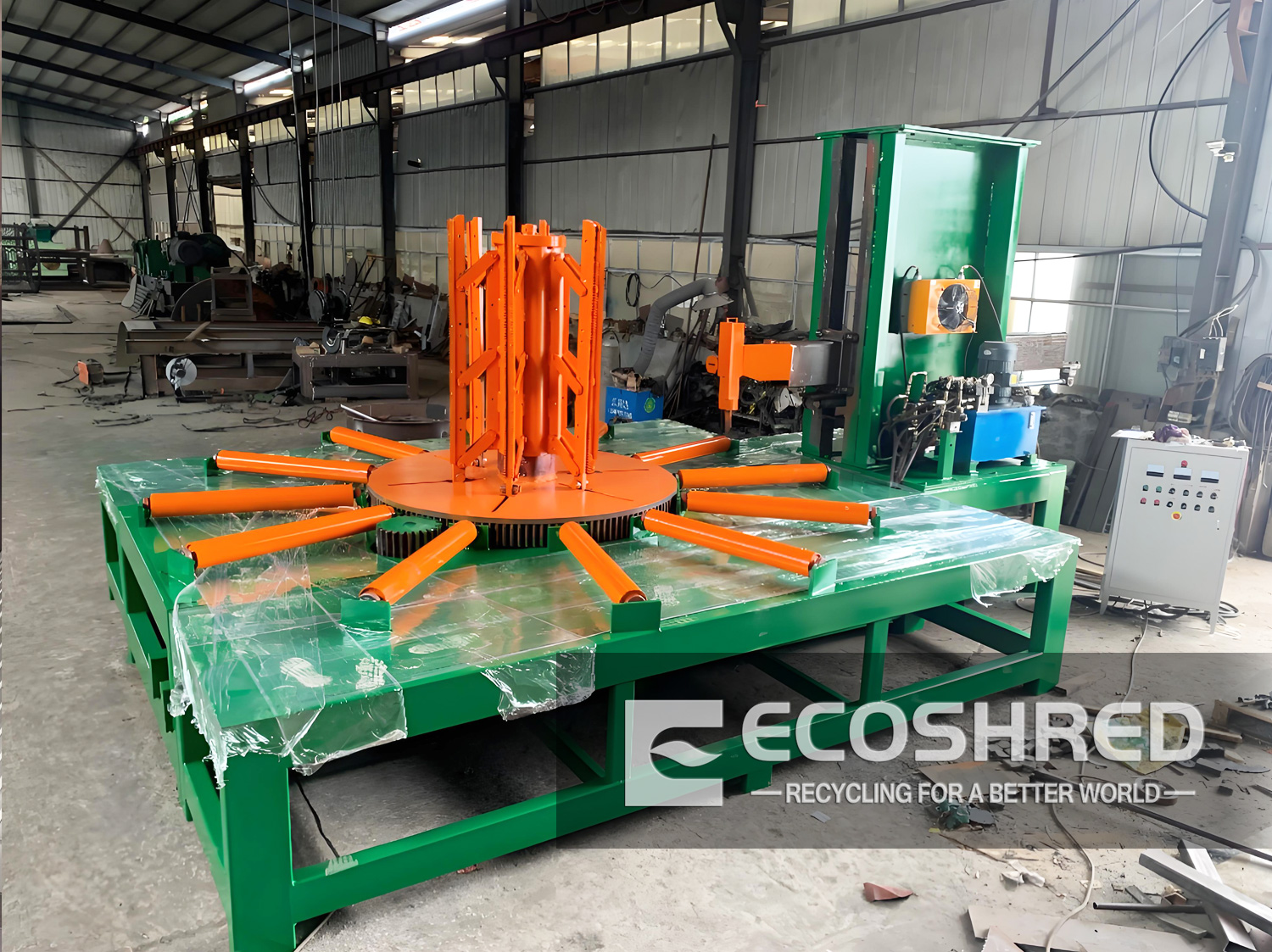Recycling Off-The-Road (OTR) tires—used in mining, construction, and agriculture—requires specialized methods due to their large size (up to 4 meters in diameter) and complex structure. Below is a detailed, industry-focused guide to recycling OTR tires efficiently and sustainably.
1. Pre-Treatment: Size Reduction
OTR tires must be cut into manageable sections before processing.
Equipment: Hydraulic OTR tire cutting machines with reinforced blades (e.g., 500-ton capacity).
Output: Sections of 30-50cm for easier handling.
Safety: Use laser-guided systems to minimize worker exposure to steel belts.
2. Steel Wire & Fiber Separation
A single OTR tire contains 1-2 tons of steel and multiple nylon/rayon layers.
Magnetic Separators: Extract 98% of steel wires (20-30mm thickness) for scrap metal recycling.
Fiber Removal Systems: Air classifiers or vibrating screens separate textile fibers, which are repurposed for insulation materials.
3. Primary Shredding
Reduce rubber sections to 50-100mm chips using:
Dual-Shaft Shredders: Equipped with 500-1,000 HP motors for high-torque processing.
Cooling Systems: Water jets prevent overheating during shredding (target temperature: <80°C).
4. Granulation & Refinement
Convert shredded chips into reusable rubber granules (1-10mm sizes).
Granulators: Multi-stage machines with adjustable sieve plates.
Applications:
1-3mm: Asphalt modifier (enhances road durability by 40%).
4-10mm: Playground surfaces or industrial flooring.
5. Pyrolysis for Non-Recyclable Rubber
For heavily damaged OTR tires, pyrolysis offers an alternative:
Process: Heat rubber at 300-500°C in oxygen-free reactors to produce oil (40-45% yield), carbon black (30%), and syngas.
Compliance: EPA-approved scrubbers must treat emissions (PM2.5 <10mg/Nm³).
Key Challenges & Solutions
Challenge: High steel content damages equipment.
Solution: Pre-cut tires and use tungsten carbide-coated blades.
Challenge: Transporting oversized tires.
Solution: On-site shredding units reduce volume by 80%.
Regulatory Considerations
OSHA Standards: Enclosed processing areas with dust control (air quality <5mg/m³ respirable dust).
Waste Tracking: Document rubber output via systems like EPR (Extended Producer Responsibility).
For customized OTR tire recycling solutions compliant with global standards, contact our engineering team.

